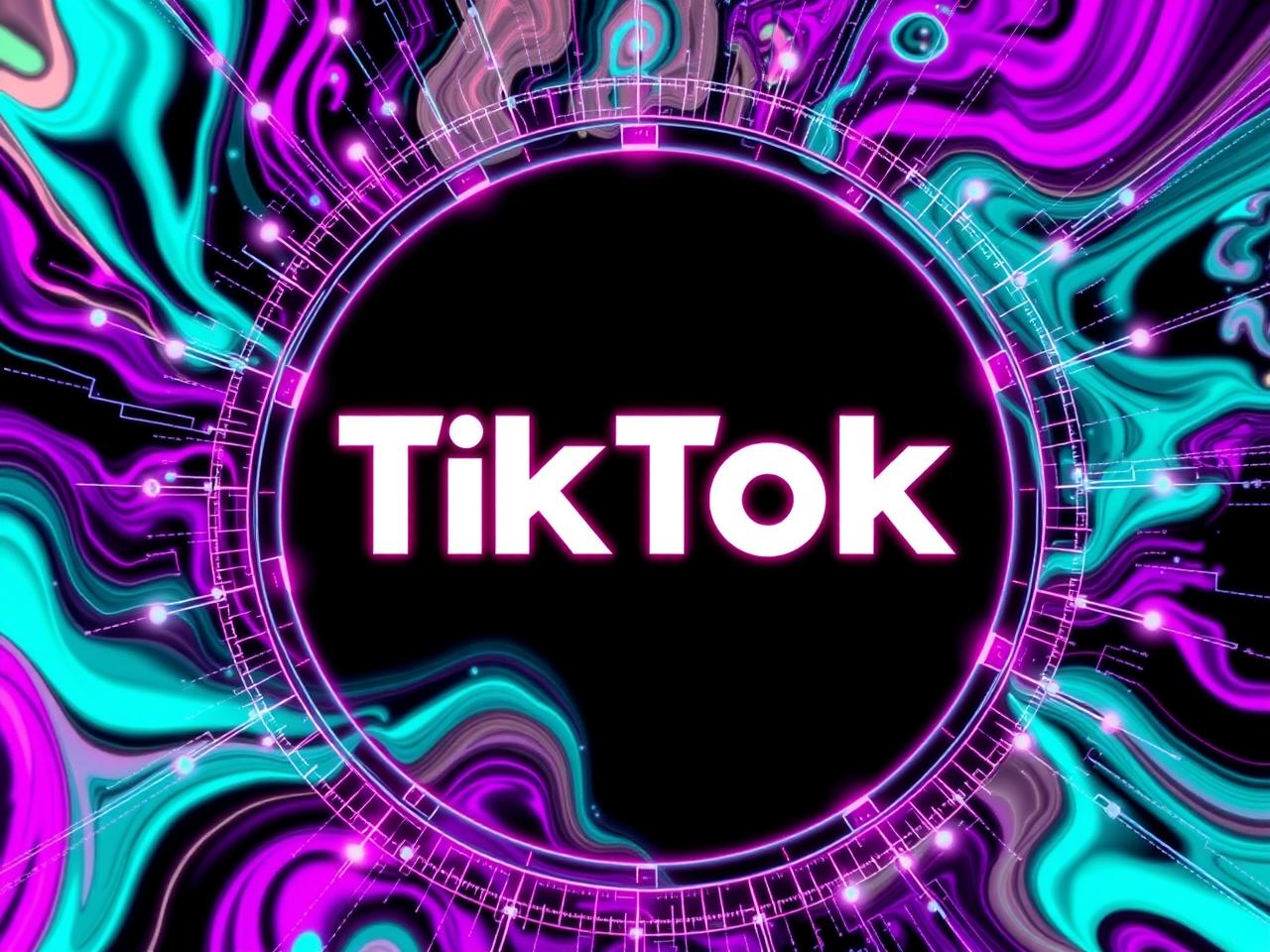The Psychology Behind TikTok’s Addictive Algorithm: What Keeps Us Hooked?
TikTok’s algorithm is a sophisticated system that personalizes content for each user. It employs machine learning, artificial intelligence, and user data to create individualized video feeds. The algorithm considers various factors, including past user behavior, content interactions, location, and device type.
This approach ensures that users are presented with content aligned with their interests and preferences. The algorithm also prioritizes potentially viral content, often showcasing videos that have already gained popularity. This strategy can create a sense of urgency among users to stay informed about current trends.
The system takes into account the duration of video views and user engagement metrics such as likes, comments, and shares. This data is used to continually refine each user’s feed, aiming to maintain user interest and encourage prolonged app usage. By constantly analyzing and adapting to user behavior, TikTok’s algorithm aims to provide a highly engaging experience tailored to individual preferences.
This personalized approach is designed to keep users actively engaged with the platform for extended periods.
Key Takeaways
- TikTok’s algorithm is designed to keep users engaged by showing them content that is likely to interest them, keeping them on the app for longer periods of time.
- The science of addiction plays a role in the way TikTok’s algorithm operates, as it aims to keep users coming back for more by providing them with a constant stream of engaging content.
- Dopamine and the reward system in the brain are key factors in the addictive nature of TikTok, as the app provides users with a sense of pleasure and satisfaction when they receive likes, comments, and shares on their videos.
- Personalization is a crucial aspect of TikTok’s algorithm, as it tailors the content shown to each user based on their previous interactions and preferences, further increasing their engagement with the app.
- Social validation, such as likes and comments from other users, has a significant influence on the addictive nature of TikTok, as it provides users with a sense of acceptance and belonging within the community.
- FOMO, or the fear of missing out, is heightened by TikTok’s algorithm, as it constantly shows users new and trending content, making them feel like they need to stay on the app to avoid missing out on the latest trends and videos.
- The addictive nature of TikTok and the constant exposure to social validation and FOMO can have a negative impact on mental health, leading to increased feelings of anxiety, low self-esteem, and a distorted sense of reality.
The Science of Addiction

The Science Behind TikTok’s Addictiveness
The constant stream of new and exciting content triggers the release of dopamine in the brain, a neurotransmitter associated with pleasure and reward. As users continue to engage with the app, their brain becomes conditioned to associate using TikTok with feelings of pleasure and satisfaction.
The Autoplay Feature: A Key Contributor to Addiction
The platform’s use of autoplay, which seamlessly transitions from one video to the next without requiring any action from the user, creates a continuous loop of content that makes it easy for users to lose track of time and spend hours on the app without realizing it.
A Personalized Experience: The Final Nail in the Coffin
TikTok’s algorithm constantly learns from user behavior and adapts to their preferences, presenting fresh and tailored content that keeps users engaged. This combination of addictive design elements and personalized content makes it incredibly difficult for users to resist the urge to keep coming back for more.
Dopamine and the Reward System

Dopamine plays a crucial role in the brain’s reward system, which is responsible for reinforcing behaviors that are pleasurable and satisfying. When something enjoyable or exciting happens, such as watching a funny or entertaining video on TikTok, dopamine is released in the brain, creating a feeling of pleasure and satisfaction. This reinforces the behavior and encourages the individual to seek out similar experiences in the future.
In the context of TikTok, this means that every time a user watches a video that they find enjoyable or engaging, their brain releases dopamine, creating a sense of reward and reinforcing their desire to continue using the app. The release of dopamine in response to using TikTok creates a feedback loop that makes it difficult for users to stop using the app. As they continue to consume more content and engage with the platform, their brain becomes increasingly conditioned to associate using TikTok with feelings of pleasure and reward.
This can lead to a compulsive need to keep using the app in order to continue experiencing those pleasurable feelings. Over time, this can lead to addictive behavior as users become increasingly reliant on TikTok as a source of pleasure and satisfaction.
The Role of Personalization
One of the key factors that contributes to TikTok’s addictive nature is its highly personalized feed of content. The platform’s algorithm uses a wide range of data points, including user behavior, preferences, and even location, to curate a feed of videos that is tailored specifically to each individual user. This means that every time a user opens the app, they are presented with a stream of content that is most likely to capture their attention and keep them engaged.
This level of personalization creates a sense of exclusivity and makes users feel like the content they are seeing is specifically curated for them. The personalized nature of TikTok’s feed also creates a sense of novelty and excitement, as users are constantly being presented with new and interesting content that aligns with their interests and preferences. This makes it incredibly difficult for users to resist the urge to keep scrolling and watching, as they are always eager to see what new videos have been curated for them.
Additionally, the personalized feed also creates a sense of investment in the platform, as users feel like their experience on TikTok is unique to them. This can lead to a sense of attachment and loyalty to the app, making it even harder for users to break away.
The Influence of Social Validation
Another key aspect of TikTok’s addictive nature is its emphasis on social validation. The platform’s algorithm prioritizes content that is likely to go viral, meaning that users are often shown videos that have already gained traction and popularity. This creates a sense of social proof, as users are more likely to engage with content that has already been validated by others.
Additionally, TikTok’s use of likes, comments, and shares as indicators of engagement further reinforces this sense of social validation, as users are constantly seeking out content that will garner positive reactions from others. The influence of social validation on TikTok can be incredibly powerful, as users become increasingly motivated to create and share content that will be well-received by others. This can lead to a cycle of seeking out validation through engagement with the platform, as users become more invested in creating content that will garner likes and positive comments.
Additionally, the social validation aspect also creates a sense of competition among users, as they strive to create content that will outperform others and gain recognition within the community. This constant pursuit of social validation can be incredibly addictive, as users become increasingly reliant on the positive feedback they receive from others.
FOMO and the Fear of Missing Out

The Power of Viral Content
The platform’s emphasis on viral content and trends means that users are constantly being exposed to new and popular videos that have gained traction within the community. This creates a sense of urgency and excitement, as users feel compelled to stay on the app in order to stay up to date with the latest trends and memes.
Autoplay Amplifies FOMO
Additionally, TikTok’s use of autoplay further amplifies this sense of FOMO, as users are seamlessly transitioned from one video to the next without any effort on their part. The fear of missing out on new and popular content can be incredibly compelling, as users become increasingly anxious about falling behind or being left out.
The Pressure to Stay Relevant
The fear of missing out can also drive users to engage with content more frequently in order to stay relevant within the community. This constant pressure to stay up to date with what’s happening on TikTok can be incredibly addictive, as users become increasingly reliant on the platform in order to avoid feeling left out.
The Impact on Mental Health
The addictive nature of TikTok can have significant implications for mental health, as users may find themselves spending excessive amounts of time on the app at the expense of other activities. This can lead to feelings of guilt, anxiety, and even depression as users struggle to break away from the platform. Additionally, the constant pursuit of social validation and fear of missing out can create feelings of inadequacy and low self-esteem as users compare themselves to others within the community.
Furthermore, excessive use of social media platforms like TikTok has been linked to increased feelings of loneliness and isolation, as users may become more focused on their online interactions at the expense of real-world relationships. The constant exposure to curated and often unrealistic representations of others’ lives can also lead to feelings of inadequacy and dissatisfaction with one’s own life. In conclusion, TikTok’s algorithm is designed to exploit the brain’s reward system through personalized content, social validation, and FOMO, leading to addictive behavior among its users.
While TikTok can be an entertaining and enjoyable platform for many, it’s important for users to be mindful of their usage and its potential impact on their mental health.
FAQs
What is TikTok’s addictive algorithm?
TikTok’s addictive algorithm refers to the platform’s use of artificial intelligence and machine learning to personalize the content that users see on their feeds. The algorithm analyzes user behavior, such as likes, comments, and shares, to recommend videos that are likely to keep users engaged.
How does TikTok’s algorithm keep users hooked?
TikTok’s algorithm keeps users hooked by continuously serving them content that aligns with their interests and preferences. This creates a highly personalized and engaging user experience, making it difficult for users to stop scrolling through their feeds.
What psychological factors contribute to TikTok’s addictiveness?
TikTok’s addictiveness can be attributed to several psychological factors, including the use of variable rewards, social validation through likes and comments, the fear of missing out (FOMO), and the platform’s ability to create a sense of community and belonging among users.
How does TikTok’s algorithm impact user behavior?
TikTok’s algorithm impacts user behavior by influencing the type of content users consume and engage with. This can lead to increased time spent on the platform, higher levels of user engagement, and a tendency to keep coming back for more content.
What are some potential concerns related to TikTok’s addictive algorithm?
Some potential concerns related to TikTok’s addictive algorithm include its potential to create addictive behaviors, excessive screen time, and potential negative impacts on mental health, particularly among younger users. Additionally, there are concerns about the platform’s ability to influence and manipulate user behavior.







